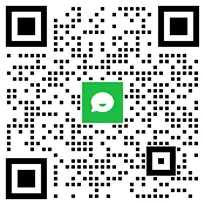Jokhang Temple is in the middle of Lhasa near the famous Potala Palace. It became a UNESCO World Heritage Site in 1994, showing how important it is for people who visit Lhasa. But it's more than just a tourist place. It's super important for Tibetan beliefs and Buddhism. Let's explore this special place, full of culture and spiritual meaning.
Why is Jokhang Temple So Significant?
Located in Lhasa's old city, Jokhang Temple sits between Jiangsu Road and Beijing East Road, at 3650 meters above sea level. A mere 1.5 kilometers from the Potala Palace, it's a short 15-minute stroll to the palace square, with Barkhor Street to its west.
 Jokhang Temple is the holiest monastery in Tibet.
Jokhang Temple is the holiest monastery in Tibet.As one of Tibet's oldest temples, Jokhang, established in 647 AD during the Tubo Dynasty's peak, boasts over a millennium of history. Revered across all Tibetan Buddhism sects, it annually draws pilgrims from across Tibet and neighboring regions, affirming its revered status.
Integral to its history is Princess Wencheng of the Tang Dynasty, responsible for its site and design. The temple houses a prized relic - the life-sized statue of the 12-year-old Sakyamuni Buddha, brought from the Tang Dynasty by Princess Wencheng. This golden statue, embodying the temple's essence, offers visitors a profound, almost tangible connection to Sakyamuni Buddha. It stands as a beacon of compassion and benevolence, anchoring the spiritual life of Tibetan Buddhists.
What Makes Jokhang Temple So Important in Tibetan Daily Life?
Jokhang Temple, beyond being a pivotal center for Tibetan Buddhism, pulsates as the lifeblood of Lhasa. Together with the nearby Potala Palace, it epitomizes the city's soul. A magnet for pilgrims, its religious stature fills it with vibrant activity.
For local Tibetans, visiting the temple and engaging in prostrations form a vital ritual in their daily lives. The temple grounds, often dotted with hundreds of mats, bear witness to the deep faith of devotees of all ages, including the elderly and infirm, who partake in the sacred act of circumambulating Barkhor Street.
 Tibetan pilgrims in front of Jokhang Temple
Tibetan pilgrims in front of Jokhang TempleBarkhor Street itself, a pivotal path encircling the temple, is characterized by its polished stone pavements, worn smooth by countless acts of devotion. The area teems with Tibetan sweet tea houses, beloved by residents as relaxed havens for tea and conversation, reinforcing the temple’s role in Lhasa’s communal life.
Additionally, the temple's proximity to Lhasa's bustling wholesale market underscores its significance not just as a spiritual beacon but also as a cornerstone of social interaction in the city. For visitors, a journey here offers a profound immersion into this integral facet of Tibetan culture.
What are the Highlights of Jokhang Temple?
Jokhang Temple, at the heart of Tibetan Buddhism, safeguards its most sacred relics. Visitors here can directly experience the profound spiritual and cultural heritage embodied in these revered artifacts.
1. Life-Size Statue of the 12-Year-Old Sakyamuni Buddha
According to legend, this statue was personally crafted by Sakyamuni Buddha, and there are only three life-sized statues of him in the world: depicting him at the ages of 8, 12, and 25. This 12-year-old statue has always been treasured within the Jokhang Temple. Seeing this statue is akin to being in the presence of Sakyamuni Buddha himself, an exceptionally rare blessing.
 The 12-Year-Old Sakyamuni Buddha statue within the Jokhang Temple
The 12-Year-Old Sakyamuni Buddha statue within the Jokhang Temple2. Precious Maitreya Buddha Statue
In the Jokhang Temple, there's also an extremely precious statue of Maitreya Buddha. During the annual Monlam Prayer Festival, this exquisitely crafted Maitreya Buddha statue is carried around Barkhor Street as part of a solemn religious ritual and act of faith.
3. The Three Dharma Kings - Grandfather, Father, and Son
Intertwined with Tibet's Tubo Dynasty, Jokhang's history is marked by the contributions of Kings Songtsen Gampo, Trisong Detsen, and Tride Songtsen, pivotal in Buddhism's spread in Tibet.
4. Twenty-One Taras to Subdue Demons
These embodiments of compassion in Jokhang represent wisdom and guidance, offering comfort and support to devotees.
5. Precious Ancient Architecture
The ancient sandalwood door frames, carvings, and wooden pillars from the 7th century within the Jokhang Temple form significant elements of its architecture. These ancient wooden artworks boast a history spanning a millennium, showcasing the exquisite craftsmanship of ancient artisans.
 Precious ancient architecture within the Jokhang Temple
Precious ancient architecture within the Jokhang TempleThese ancient wood carvings and structural elements greatly contribute to the unique charm and historical value of the Jokhang Temple. They are among the reasons why the Jokhang Temple has been listed as a World Heritage Site.
What's the Layout of Jokhang Temple and How can I Tour it?
The Jokhang Temple is very important to Buddhists. Its layout and path for visitors show a special Buddhist idea called a mandala. This idea is about the universe. The temple's design is like a trip from regular people to wise Buddha. When people visit, it feels like they're going on a journey to Buddha's special place.
 Jokhang Temple’s layout and path for visitors show a special Buddhist idea called a mandala.
Jokhang Temple’s layout and path for visitors show a special Buddhist idea called a mandala.Touring the temple, you can ascend from the ground floor to the upper levels in a clockwise direction, moving through significant halls like the Sakyamuni Hall, Tsongkhapa Hall, Songtsen Gampo Hall, and others, each marking a step in this spiritual progression.
What are the Major Festivals and Events at Jokhang Temple?
1. Saga Dawa Festival
Marking Sakyamuni Buddha's birth and parinirvana, the significant Saga Dawa Festival on the fourth month's 15th day sees month-long celebrations. Jokhang Temple's grand prayer ceremony on this day draws a multitude of devotees.
2. Butter Lamp Festival
Commemorating Tibetan Buddhist master Tsongkhapa's death anniversary, this festival on the 25th day of the tenth month lights up temples and homes citywide with lamps and candles, creating a mesmerizing display. Barkhor Street buzzes with pilgrims, and Jokhang Temple glows with butter lamps and chants.
 Butter Lamp Festival is held at Jokhang Temple.
Butter Lamp Festival is held at Jokhang Temple.3. Monlam Prayer Festival
Tibet's largest religious event, held in the first Tibetan month's third or fourth day. It features monks and devotees praying at Jokhang Temple, and the Geshe degree examinations, drawing widespread participation.
What are the Recommended Attractions Surrounding Jokhang Temple?
Barkhor Street goes all around Jokhang Temple in a 1000-meter path. Lots of people visit there, both pilgrims and tourists, making the area lively with shops and culture. There are also some interesting places nearby to check out:
1. Makye Ame Restaurant
Famous for its connection to the love story of the 6th Dalai Lama, Tsangyang Gyatso, and Makye Ame, this restaurant on Barkhor Street offers a dining experience infused with Tsangyang Gyatso's music, poetry, and the story's tragic romance, serving as a gateway to Tibetan culture and cuisine.
 Makye Ame Restaurant in Lhasa
Makye Ame Restaurant in Lhasa2. Anitsangkung Nunnery
Only 300 meters away from Barkhor Street, there's Anitsangkung Nunnery, the only one in Lhasa's old town. In the past, rich families sent their daughters there because it had strict rules for nuns to behave well and learn a lot about Buddhism.
The nunnery keeps going thanks to its special teahouse, managed by the nuns, which is famous in Lhasa. If you're curious about nun life and Buddhist ways, visiting Anitsangkung Nunnery can show you a lot about Tibetan spirituality.
3. Pingan Courtyard/Muru Temple
Muru Temple sits within the calm Pingan Courtyard, mixing temple and daily life in a special way. The people there start their mornings with prayers and walking around the temple, making it a quiet place that feels far from the usual tourist spots. The houses around used to be where monks lived, but now both monks and regular people live there, blending spiritual and normal lives.
Visiting Muru Temple feels like stepping into a peaceful place. Among the sounds of kids playing, women washing clothes, reading scriptures, and wind chimes, you'll experience a beautiful mix of faith and daily routines. It's a chance for visitors to really see Tibetan culture, spirituality, and how locals live.
4. GuangMing Gang Qiong Tian ChaGuan (Guangming Gangqiong Tibetan Sweet Tea House)
Lhasa is home to countless tea houses, with GuangMing Gang Qiong Tian ChaGuan near Jokhang Temple being particularly renowned. This popular local haunt is where Tibetans converge to sip sweet tea, savor snacks, and socialize. Here, amidst lively discussions on business, world events, and daily life, visitors can experience the vibrant, everyday culture of Lhasa, offering a genuine glimpse into the city's communal and cultural fabric.
 Guangming Gangqiong Tibetan Sweet Tea House in Lhasa
Guangming Gangqiong Tibetan Sweet Tea House in Lhasa5. Mosque and Cordyceps Market
In Lhasa's Hui community, where the city's only Hui mosque is, there's a lively cordyceps market mainly run by the Hui people. This busy market is famous for selling cordyceps.
People visiting can check out different stands selling bright yellow cordyceps that catch traders' attention from far away. Something special about this market is how prices are discussed secretly with hand signals hidden under sleeves, instead of talking or using calculators. This interesting way of trading mixes secrecy with tradition and shows what the local market culture is like.
What are the Dos and Don’ts When Visiting Jokhang Temple?
Visiting Jokhang Temple, more than a tourist attraction, requires respecting its sanctity as a site of worship and monkhood. Observe these etiquettes:
1) Maintain quietness; avoid loud sounds and high-volume devices.
2) Wear modest clothing; hats are discouraged inside the temple.
3) Photography, particularly of Buddha statues or monks, is usually prohibited without permission.
4) Avoid eating spicy or strong-smelling foods beforehand.
5) Refrain from pointing or touching Buddha statues; display respect with clasped hands.
6) Greet monks with a polite nod or bow, hands clasped.
7)Keep physical displays of affection, like hugging or kissing, out of the temple, especially in sacred areas.
Conclusion
Jokhang Temple, a global cultural gem of Tibet, demands an understanding of its rich history and culture. Visitors to Lhasa should approach it with reverence, transcending mere tourism. A personal visit, experiencing its solemnity and sacredness, offers genuine appreciation, deeper insights, and inspiration. Explore Jokhang Temple to truly connect with its stories and secrets for a more profound experience.

























 Jokhang Temple is the holiest monastery in Tibet.
Jokhang Temple is the holiest monastery in Tibet.
 Tibetan pilgrims in front of Jokhang Temple
Tibetan pilgrims in front of Jokhang Temple The 12-Year-Old Sakyamuni Buddha statue within the Jokhang Temple
The 12-Year-Old Sakyamuni Buddha statue within the Jokhang Temple Precious ancient architecture within the Jokhang Temple
Precious ancient architecture within the Jokhang Temple Jokhang Temple’s layout and path for visitors show a special Buddhist idea called a mandala.
Jokhang Temple’s layout and path for visitors show a special Buddhist idea called a mandala. Butter Lamp Festival is held at Jokhang Temple.
Butter Lamp Festival is held at Jokhang Temple. Makye Ame Restaurant in Lhasa
Makye Ame Restaurant in Lhasa Guangming Gangqiong Tibetan Sweet Tea House in Lhasa
Guangming Gangqiong Tibetan Sweet Tea House in Lhasa











Ask a Quick Question